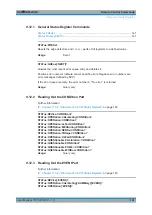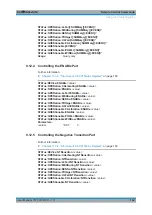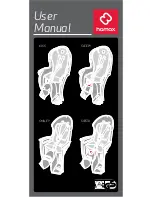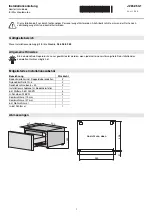
Remote Control Commands
R&S
®
NRPxxS(N)
130
User Manual 1177.5079.02 ─ 10
In a LAN that uses a DNS server (domain name system server), you can access each
connected instrument using a unique hostname instead of its IP address. The DNS
server translates the hostname to the IP address. Using a hostname is especially use-
ful if a DHCP server is used, as a new IP address can be assigned each time the
instrument is restarted.
The sensor performs the change of the hostname immediately after the command is
sent. For this purpose, the sensor restarts its connection to the network, which can
take several seconds. During this time, you cannot address the sensor. After the
restart, you can only address the sensor using the newly set hostname.
Note:
It is recommended that you do not change the default hostname to avoid prob-
lems with the network connection. However, if you change the hostname, be sure to
use a unique name.
Parameters:
<hostname>
Example:
SYST:COMM:NETW:COMM:HOST
'powersensor-2nd-floor'
Sets
powersensor-2nd-floor
as new hostname.
Manual operation:
See
SYSTem:COMMunicate:NETWork:IPADdress
<ipaddress>
Effective only:
●
For the R&S
NRP LAN power sensors.
●
SYSTem:COMMunicate:NETWork:IPADdress:MODE
is set to
STATic
.
Sets the IP address of the sensor.
Parameters:
<ipaddress>
Example:
SYST:COMM:NETW:IPAD '192.168.10.29'
Sets
192.168.10.29
as IP address.
Manual operation:
See
SYSTem:COMMunicate:NETWork:IPADdress:GATeway
<gateway>
Effective only:
●
For the R&S
NRP LAN power sensors.
●
SYSTem:COMMunicate:NETWork:IPADdress:MODE
is set to
STATic
.
Sets the IP address of the default gateway.
Parameters:
<gateway>
Example:
SYST:COMM:NETW:IPAD:GAT '192.168.10.254'
Sets
192.168.10.254
as IP address of the default gateway.
Configuring the System
















































